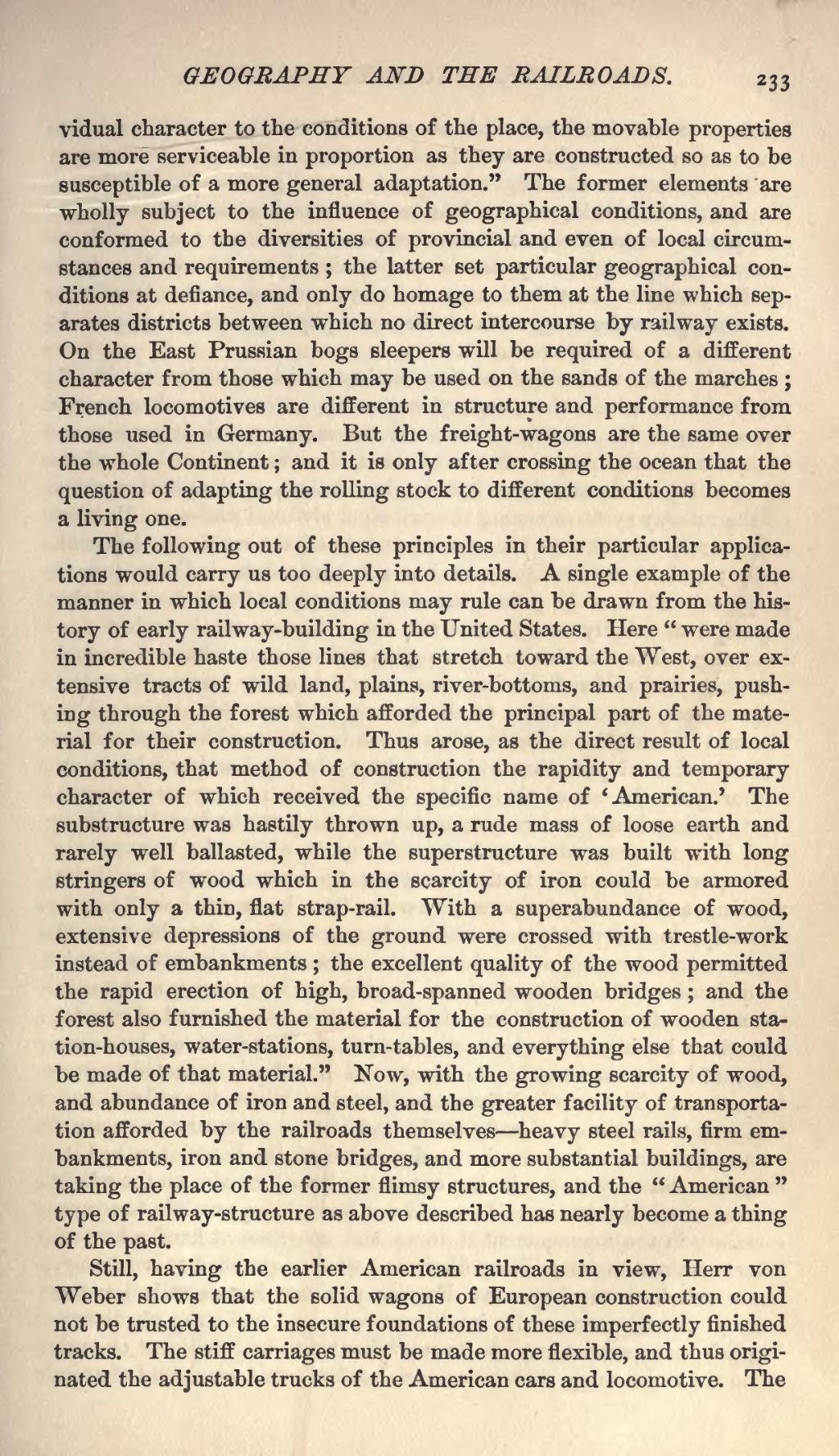vidual character to the conditions of the place, the movable properties
are more serviceable in proportion as they are constructed so as to be
susceptible of a more general adaptation.” The former elements are
wholly subject to the influence of geographical conditions, and are
conformed to the diversities of provincial and even of local circumstances
and requirements; the latter set particular geographical
conditions at defiance, and only do homage to them at the line which
separates districts between which no direct intercourse by railway exists.
On the East Prussian bogs sleepers will be required of a different
character from those which may be used on the sands of the marches;
French locomotives are different in structure and performance from
those used in Germany. But the freight-wagons are the same over
the whole Continent; and it is only after crossing the ocean that the
question of adapting the rolling stock to different conditions becomes
a living one.
The following out of these principles in their particular applications would carry us too deeply into details. A single example of the manner in which local conditions may rule can be drawn from the history of early railway-building in the United States. Here “were made in incredible haste those lines that stretch toward the West, over extensive tracts of wild land, plains, river-bottoms, and prairies, pushing through the forest which afforded the principal part of the material for their construction. Thus arose, as the direct result of local conditions, that method of construction the rapidity and temporary character of which received the specific name of ‘American.’ The substructure was hastily thrown up, a rude mass of loose earth and rarely well ballasted, while the superstructure was built with long stringers of wood which in the scarcity of iron could be armored with only a thin, flat strap-rail. With a superabundance of wood, extensive depressions of the ground were crossed with trestle-work instead of embankments; the excellent quality of the wood permitted the rapid erection of high, broad-spanned wooden bridges; and the forest also furnished the material for the construction of wooden station-houses, water-stations, turn-tables, and everything else that could be made of that material.” Now, with the growing scarcity of wood, and abundance of iron and steel, and the greater facility of transportation afforded by the railroads themselves—heavy steel rails, firm embankments, iron and stone bridges, and more substantial buildings, are taking the place of the former flimsy structures, and the “American” type of railway-structure as above described has nearly become a thing of the past.
Still, having the earlier American railroads in view, Herr von Weber shows that the solid wagons of European construction could not be trusted to the insecure foundations of these imperfectly finished tracks. The stiff carriages must be made more flexible, and thus originated the adjustable trucks of the American cars and locomotive. The
